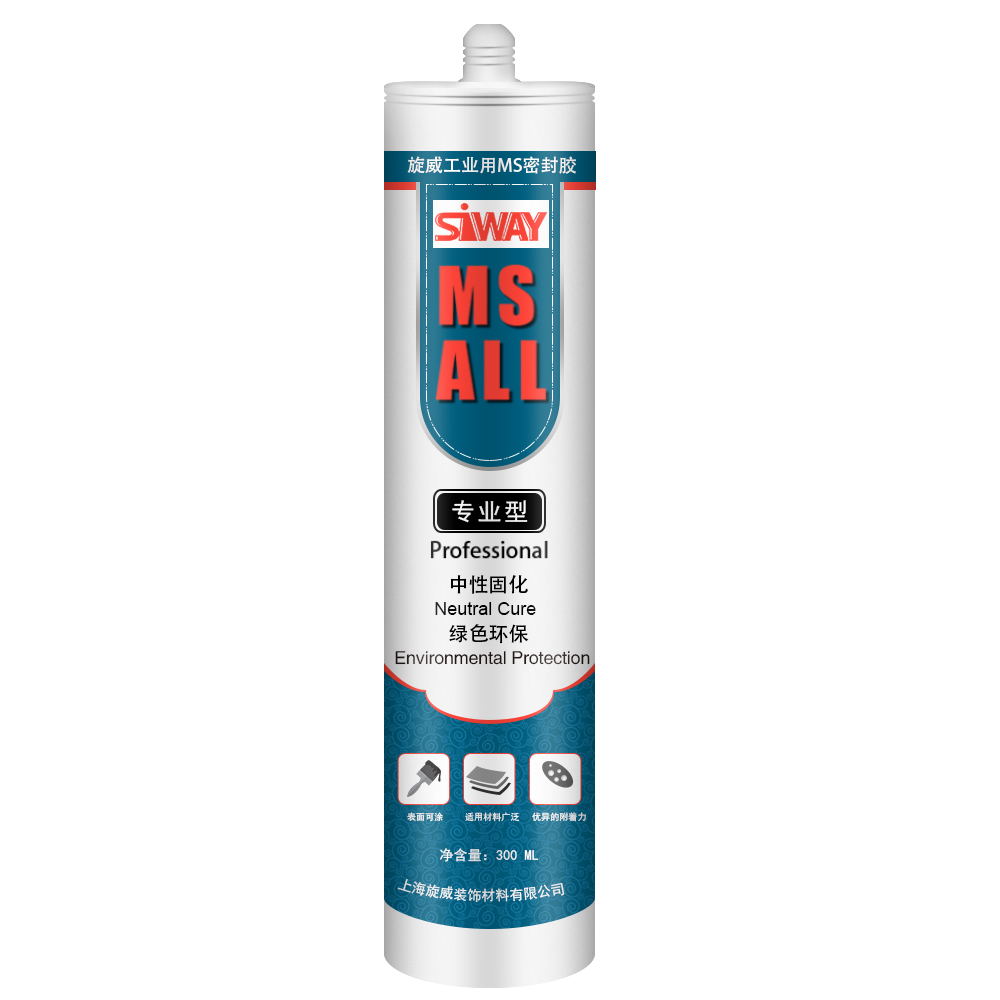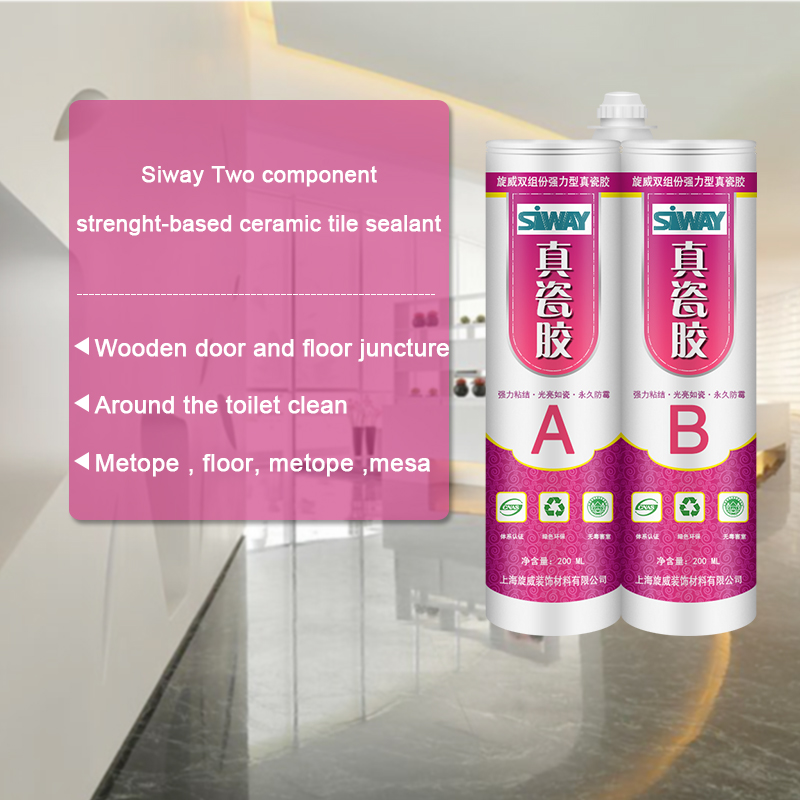OEM/ODM Supplier for SV-900 Industrial MS polymer silicone sealant for Sheffield Factory
Short Description:
Description It is one component, primer less, can be painted, high quality joint sealant based on MS polymer technology, ideal for all sealing and boding on all materials. It is solvent free, environmental protection product. Where to use Sealing and bonding in housing area, bus, train, elevator, air conditioner, ventilation equipment. Used for installing fixed panel frame, windowsill threshold, and suitable for sealing on all materials surface, like painted metal, glass, wood, concret...
We are convinced that with joint efforts, the business between us will bring us mutual benefits. We can assure you product quality and competitive price for OEM/ODM Supplier for SV-900 Industrial MS polymer silicone sealant for Sheffield Factory, We warmly welcome you to establish cooperation and create a bright future together with us
Description
It is one component, primer less, can be painted, high quality joint sealant based on MS polymer technology, ideal for all sealing and boding on all materials. It is solvent free, environmental protection product.
Where to use
Sealing and bonding in housing area, bus, train, elevator, air conditioner, ventilation equipment. Used for installing fixed panel frame, windowsill threshold, and suitable for sealing on all materials surface, like painted metal, glass, wood, concrete, marble, natural stone, granite, bricks, mirrors, aluminum, steel, lead, zinc, common plastics, polystyrene, polyurethane and so on. Sealing the joint of ceiling, timber, gaps of water pipe, gutter on roofs, moved rooms, container, marine. Apply for interior and exterior family decoration, like floor adhesive systems, particular for laying floor tiles, suitable for kitchen, bathroom.
Key Features
1. Paint able
2. Sealing most materials
3. Excellent adhesion
Technical data sheet
| Test standard | Test project | Unit | value |
| Before curing——25℃,50%R.H. | |||
| GB13477 | density | g/m³ | 1.40±0.05 |
| GB2793 | Non-volatile components | % | 99.5 |
| GB13477 | Flow, sagging or vertical flow | mm | 0 |
| GB13477 | surface drying time(25℃,50%R.H.) | min | 30 |
| Curing speed | mm/24h | 3 | |
| Sealant curing speed and operating time will have different with different temperatures and temperature, high temperature and high humidity can make sealant curing speed faster, rather low temperature and low humidity are slower.14days after curing——25℃,50%R.H. | |||
| GB13477 | Durometer Hardness | Shore A | 32-38 |
| GB13477 | The ultimate tensile strength | Mpa | 2.5 |
| GB13477 | elongation at break | % | 400 |
Color
White, black, grey
Package
300ml plastic cartridges
Shelf life
12 months
Note
If you want the TDS or MSDS or other details, please contact with our sales person.
What is SILICONE RUBBER? What does SILICONE RUBBER mean? SILICONE RUBBER meaning – SILICONE RUBBER definition – SILICONE RUBBER explanation.
Source: Wikipedia.org article, adapted under https://creativecommons.org/licenses/by-sa/3.0/ license.
Silicone rubber is an elastomer (rubber-like material) composed of silicone—itself a polymer—containing silicon together with carbon, hydrogen, and oxygen. Silicone rubbers are widely used in industry, and there are multiple formulations. Silicone rubbers are often one- or two-part polymers, and may contain fillers to improve properties or reduce cost. Silicone rubber is generally non-reactive, stable, and resistant to extreme environments and temperatures from -55 °C to +300 °C while still maintaining its useful properties. Due to these properties and its ease of manufacturing and shaping, silicone rubber can be found in a wide variety of products, including: automotive applications; cooking, baking, and food storage products; apparel such as undergarments, sportswear, and footwear; electronics; medical devices and implants; and in home repair and hardware with products such as silicone sealants.
In its uncured state, silicone rubber is a highly-adhesive gel or liquid. In order to convert to a solid, it must be cured, vulcanized, or catalyzed. This is normally carried out in a two-stage process at the point of manufacture into the desired shape, and then in a prolonged post-cure process. It can also be injection molded.
Silicone rubber may be cured by a platinum-catalyzed cure system, a condensation cure system, a peroxide cure system, or an oxime cure system. For platinum catalyzed cure system, the curing process can be accelerated by adding heat or pressure.
In a platinum-based silicone cure system, also called an addition system (because the key reaction building polymer is an “Addition reaction”). With platinum as catalyst, two different chemical groups react, a silicone hydride and a vinyl. In this reaction, an ethyl group is formed and there are no byproducts. Two separate components must be mixed to catalyze the polymers: the one component contains a platinum complex which must be mixed with the second, a hydride- and a vinyl-functional siloxane polymer, creating an ethyl bridge between the two. Such silicone rubbers cure quickly, though the rate of or even ability to cure is easily inhibited in the presence of elemental tin, sulphur, and many amine compounds.
Condensation curing systems can be one-part or two-part systems. In one-part or RTV (room-temperature vulcanizing) system, a cross-linker exposed to ambient humidity (i.e., water) experiences a hydrolysis step and is left with a hydroxyl or silanol group. The silanol condenses further with another hydrolyzable group on the polymer or cross-linker and continues until the system is fully cured. Such a system will cure on its own at room temperature and (unlike the platinum-based addition cure system) is not easily inhibited by contact with other chemicals, though the process may be affected by contact with some plastics or metals and may not take place at all if placed in contact with already-cured silicone compounds. The crosslinkers used in condensation cure systems are typically alkoxy, acetoxy or oxime silanes such as methyl trimethoxy silane for alkoxy-curing systems and methyl triacetoxysilane for acetoxy-curing systems. In many cases an additional condensation catalyst is added to fully cure the RTV system and achieve a tack-free surface. Organotitanate catalysts such as tetraalkoxy titanates or chelated titanates are used in alkoxy-cured systems. Tin catalysts such as dibutyl tin dilaurate (DBTDL) can be used in oxime and acetoxy-cured systems….
Introduction to Pureshield
Pureshield is a fast growing company which deals with the sourcing, development, and distribution of high-end surface technology products. Pureshield Car Glass Sealant is a hydrophobic coating for Automotive Glass which enhance visibility by repelling water, dirt and oils making the glass easy to clean. Pureshield Car Glass selant is a 3 sachet set for Pre-Cleaning, Sealing and Polishing.
Preparing For Application
Car must be inside the garage and away from direct sunlight before the application .
Clean the outer glass surface to be applied thoroughly with water and make it dry
In hot conditions, when temperature is over 35 degree celcius, it is advisable to keep the temperature down by switching on the air conditioner in the car.
Wipe the glass clean with lint free cotton cloth, and ensure that all traces of water and dust are removed.
Application
Wear gloves provided in the set before starting application.
Pre-Cleaning,
Open the Cleaning Sachet(Sachet No:1), and use cleaning cloth to wipe clean the glass in uniform circular motions.
Ensure that the entire surface of the glass is wiped clean. Do not leave any gaps.
Wipe clean the glass, at least twice using both sides of the cleaning cloth.
This will help to remove any additional grease or any other oily substances which will not be cleaned with water alone.
Make sure that the Glass is completely dry before the next procedure.
Sealing
Open Sealant Sachet (Sachet No;2) and use sealing cloth to apply the sealant.
Start applying from the drivers side from top to bottom and continue this till the full Glass is coated with sealant solution. Use either side of the sealing cloth, this should be done with out wasting any time as the sealant will be lost due to evaporation. As soon as the first layer is applied start polishing the surface with the same sealing cloth. with medium pressure in circular motion again starting from the drivers side and continue to the other end of the glass.
Continue this for 8 to 10 rounds till the sealant sachet is completely dry. this is done to prevent the wastage and to use maximum number of nano particles are transferred to the glass from the sealant cloth.
Polishing
• Once polishing with the sealing cloth is over, then open the Polishing cloth(sachet no:3) and polish thoroughly in circular motion for about 10 to 15 minutes with medium pressure.
• Polishing helps to fix the nano particles to the car glass and absorbs the base from the glass , so polishing is very important step in the application of Pureshield Car Glass Sealant.
• After application the car must be inside the garage for minimum 3 -6 hours. It is advisable not to use the car for 12-24 hours to ensure maximum effect.
Maintaining the Glass
Do not use any chemicals such as de-icer to clean the glass. Use plain water only.
If the hydrophobic effect fades, clean with water and polish with lint free cotton cloth.
Hydrophobic effect fades over time, especially after first application. Repeat application within 4 to 6 months of first application will give a long lasting pureshield effect.






